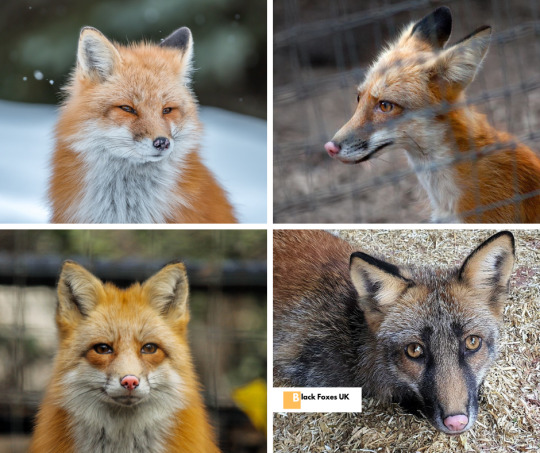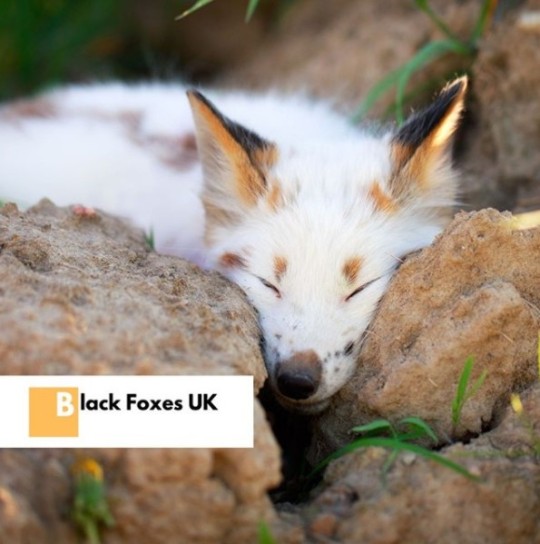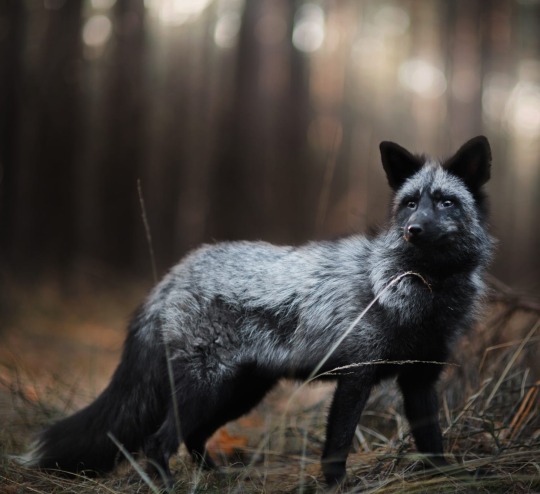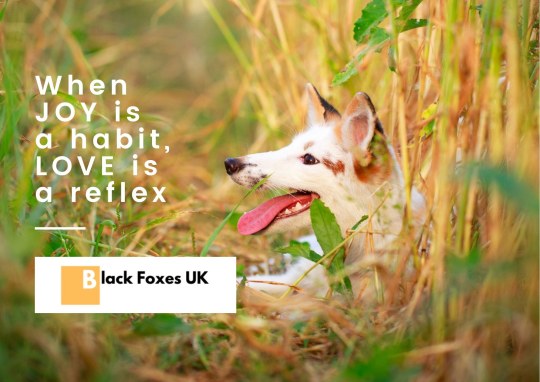Photo

What Breed Is That Fox?
"Breed - a stock of animals or plants within a species having a distinctive appearance and typically having been developed by deliberate selection."
Some may laugh at such a question or article. As foxes come in species and subspecies, not breeds. A fennec, arctic fox and red fox are all different species, with different diets, habitats and behaviours. Therefore, they cannot be considered different breeds of the same species.
Until you get to the North American red fox (Vulpes fulva) that is...
Which, you could argue, comes in a wild type and a domesticated type, with the latter available in least 2 distinct lineages or "breeds" (with their own governing bodies/associations that regulate breeding);
1) Farm line (developed commercially for physical traits)
2) Experimental line (developed scientifically for behavioural traits)
Coincidentally;
"The word breed has no biological meaning; it is bandied about by different classes of men in different places in the world without uniform regard to either type or kinship of the animals referred to. Its whole meaning is entirely dependent on the action of the rules committee of the breed association. A breed is whatever the breeders want to call it, there are no natural boundaries, and no arbitrary ones that are universally accepted. A breed is a group of domestic animals, termed such by common consent of the breeder"
0 notes
Link



0 notes
Photo

"Leave a little sparkle wherever you go"
foreverfoxy.co.uk
0 notes
Photo

Tatyana Abramova, 33, plays with her fox, Plombir, at her house outside the Siberian city of Novosibirsk. Soviet experiments to domesticate foxes began in 1959, with the aim of understanding the behaviour of animals and to explain how the fox’s ancestor, the wolf, evolved into the domesticated dog - Photograph: Alexander Nemenov/AFP/Getty
I’m not sure that a domesticated fox counts as wildlife but it’s a beautiful animal.
click source for more Week in Wildlife photos.
11 notes
·
View notes
Photo

Fox Tail Variation
"The tail of the red fox is known worldwide for its russet colour and its distinctive white tail tip, but there is a wide range of polymorphism to fox tails or 'brushes', as they are also known. Another less commonly reported feature of red fox tails is the ventral line of black hair often found on the underside of the tail. Fox tails can also display full or partial melanism and foxes with this trait are termed a 'black brush' foxes.
A white tail tip is commonly present in all colour variations of red fox and its genetic expression is independent of coat colour, however, full or partial tail tip melanism does occur. Tail tips can also present with a yellow hue and in some cases, tail tip differentiation can be completely absent.
Foxes use their brush as communication tool, as a windbreaker when sleeping and they also act as a rudder to direct their spectacular pounces. Foxes in Canada and North America have an exaggerated tail tip in comparison to their European relatives and commonly have thicker fuller brushes, which allows them to survive in the harsh cold climate of the sub arctic tundra. Little is know scientifically about the mechanisms and significance behind these adaptive traits.
The following excerpt is from Roger Burrows book Wild Fox: A Complete Study Of The Red Fox:
"My own observations on both living and dead foxes indicate that each fox differs, usually slightly, in some aspect of its coloration. Some are reddish brown, others decidedly ginger, whilst grey foxes are fairly commonly seen. Some foxes have white chests and underparts, others have these areas sooty or nearly black.
The tip of the tail, or tag, shows wide colour variation and may be black, white or, as in the case on one of Kent's Green vixens, decidedly yellow/buff. A white tail tag does not indicate a dog fox, as used to be thought, and we know that only a proportion of foxes have the white or albino tip, which is not, therefore, a characteristic of the species as authors suggest.
From the little information we have on this subject (Corbet, 1963), roughly 73 percent of fifteen foxes examined from England and Wales and just over 87 percent of thirty-one Scottish foxes had the white tag. The conclusion must be that the majority of British foxes do have the white tail tip but that this feature is not the monopoly of the male'"
www.blackfoxes.co.uk
0 notes
Photo

Two variations of the red fox, also fluffy butts
20K notes
·
View notes
Photo

Silver-phase North American red fox (Vulpes fulva) with piebald feet
© Jason George Photography
345 notes
·
View notes
Photo

Our recent foxy rehomes arrived safely and have been settling in well. A huge thank you to everyone involved and for your support! Wishing them all the best on an exciting new path 🦊
Watch this space for more exciting updates...
foreverfoxy.co.uk
0 notes
Photo

Black Foxes UK CIC has successfully relocated 23 silver foxes since we began rehoming foxes in 2017.
foreverfoxy.co.uk
0 notes
Photo

Nasal Depigmentation in Foxes (Snow Nose or Dudley Nose)
Nasal depigmentation is a condition in which there is little known. It is a superficial skin complaint that doesn't cause health issues and is often recorded in dogs.
Most often, there is no known cause and the condition is generally considered idiopathic, but autoimmune conditions such as lupus, parasitic infections such as leishmaniasis and genetic conditions such as vitiligo can sometimes be behind it.
The condition can be temporary or permanent, but usually causes no serious health issues. In dogs, the condition is often associated with animals that carry the recessive red gene and those with the liver colouration.
Photos by Joe Branco, Tejas Prints, Brandon Lord and Kat Gunn
blackfoxes.co.uk
2 notes
·
View notes
Photo

Seen a black or usually coloured fox? Get in touch today!
blackfoxes.co.uk
0 notes
Photo

"If you can dream it, you can do it"
foreverfoxy.co.uk
0 notes
Photo

“Never play with a fighter, never fight with a player"
foreverfoxy.co.uk
0 notes



